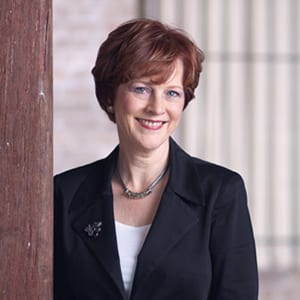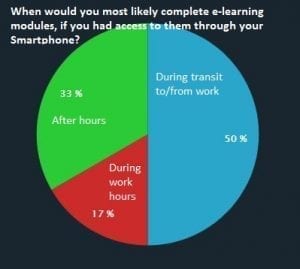Yes, you really can change a group dynamic. Here’s how.
The Art of Leadership Newsletter
CEO Update

How often have we all walked out of meetings feeling utterly frustrated either because people didn’t speak their minds because they didn’t want to upset anyone, or were so negative that everyone just went into their shells. Either way, let’s be honest; what a waste of time! What if there was a way to make meetings productive and painless? Utopia? Not at all – read this month’s blog for the secret formula on how to make this happen.
All the world’s a stage as the old adage goes, and as executives, we are constantly in the spot light. Want to improve your executive presence and impact? Then join SMG’s specialist in the field, Peter Kingston, former Head of Directing at NIDA for a day that could change your life and career.
Workforce diversity drives innovation, improves decision-making, and supports growth in new markets. But managing diversity is complex – diversity increases the likelihood of value conflicts, work-style differences, communication barriers, stereotyping and bias. Those challenges threaten the integration and cohesion of diverse workgroups. Read ‘What’s Trending in Leadership’ for eight best practices for managing diverse teams and unlocking the potential in diversity.
We trust you will enjoy this month’s newsletter, jam packed with practical tools and tips to add to your leadership toolkit.
Felicity Menzies
CEO, Stephenson Mansell Group
Blog
Yes, you really can change a group dynamic. Here’s how.

For years, I’ve worked with executives grappling with issues of team dynamics, and time-wasting, non-productive meetings. The universal plea has always been “there must be a better way”.
Sometimes, a group dynamic can feel like a game of chess. Each person is a piece with a prescribed set of moves and you can almost predict that whenever you take an initiative, the others will respond in predictable ways…whether it be to try to check-mate or sweep you from the board, drawing from their repertoire of habitual behaviours.
Fortunately, because people aren’t pawns, we can develop some new, unexpected moves that can transform the way everyone else behaves as well. Changing the way you communicate can break through established, often stuck, patterns of behaviour.
Using the theory of Structural Dynamics (with its roots in systems theory), you can analyse the verbal “actions” taking place in a meeting and respond purposefully in a way that gets people to work together more effectively. It can help you manage difficult situations by understanding the hidden dynamics in conversations, and by becoming more resourceful, and strategic, in how you communicate.
A theory of how face-to-face communication works, Structural Dynamics was developed by psychologist and clinical researcher David Kantor, whose work with family communication evolved and expanded over 35 years to apply to teams and whole organisations.
It is used for coaching individuals and teams and provides a framework and a descriptive language to understand the way in which we interact and communicate.
How conversations play out
At the heart of Kantor’s work is the Four-Player model, which codes communication between people into four “vocal acts”.
Move: Someone sets forth a direction, for instance, “We need to spend less time in these meetings”.
Follow: Someone agrees with the proposal, validating and completing. “Yes, I’ve been concerned about the same thing”.
Oppose: Someone raises objections, challenges and corrects. “I don’t think that’s right. We need time to cover every topic on the agenda”.
Bystand: Someone reflects on the other contributions to the discussion without agreeing or disagreeing, “Ian wants shorter meetings, Ralph wants to keep them the same length. What does everybody else think?”. This provides a perspective on the overall interaction and attempts to reconcile competing acts.
For effective face-to-face interaction, all four vocal acts need to be present. Kantor says that competence in communication would mean that each member of the team can “read the room”, diagnose when the communication is dysfunctional and recognise which of the four “vocal acts” is missing.
“A gifted communicator knows how to sequence these into compound actions,” says Kantor in a Strategy & Business magazine interview.
“So, if you’re dealing with fierce opposers, you don’t start off by opposing them. You bystand first. ‘I see how concerned you are about this decision, and it’s having an effect on the group’. Then you follow. ‘I think you have reason to be concerned’. Only then do you move. ‘It seems to me that we’ve got to change our decision and address your concerns, but we can’t lose the momentum of the original plan either.’ Three different actions: bystand, follow, move”.
David Kantor is the founder of the Kantor Institute. Over the past 50 years, he has trained more than a thousand “systems interventionists” (practitioners).
What I particularly like about working with Structural Dynamics is that is it morally neutral. It is not prescriptive, or built around a desired norm.
Structural Dynamics sees conversational interactions as shaped by a series of preferences we have each developed over time, based on our life’s experience. These include our “vocal acts”, and what Kantor calls our “communication domain” and “operating system”.
Together our preferences create our individual profile. There is no one Kantor profile that is better or worse than any other, although each will have situations in which it is more, or less effective.
Tackling conflict-avoidance
I have used Structural Dynamics recently in two very different organisations – but both in teams where individuals were reluctant to use the “oppose” move in conversation. They associated the voice of “oppose” with creating conflict, and said it was drummed out of them as children.
In meetings, frustration would build, as they suppressed their objections. Eventually someone would blurt out their criticism in a way that was not at all helpful, and sometimes destructive.
Building respect for the viewpoint of others, while not necessarily agreeing, has allowed a more honest, effective expression of the “oppose” voice in these organisations.
The “go along to get along” approach may have kept the meetings “nice”, but then action got bogged down afterwards as people voiced their criticisms privately, or worked against decisions in which they had little faith. Learning to respectfully challenge ideas and express objections has resulted in more sound decision-making.
Kind regards,
Gillian Turner

Gillian Turner is an accredited Kantor practitioner, mentor and coach with more than 25 years’ experience as a global senior executive and 20 years as a company director. Her career has included two CEO roles and 10 years on a NSW Government Health Board.
With law degrees from Harvard and Sydney Universities and post-graduate qualifications in coaching, counselling and psychotherapy, Gillian has worked in Australia, Hong Kong and Mexico, managed investment portfolios over $US1bn, and business interests in the US, Singapore, Europe and Asia-Pacific.
Skilled at bridging cultures – national, corporate and professional – she has worked in multinationals, ASX listed, SME’s and NFPs, and led major organisational transformations.
What’s On

Executive Presence and Impact Workshop – 20th February, 2018
A highly insightful and interactive one day workshop on Executive Presence and Impact, with SMG’s own Peter Kingston, former head of directing at NIDA and head of theatre and performing arts (WAAPA). Designed to enhance your influencing and communication skills, this workshop explores:
- Getting a grasp on leadership impact
- Learning to subtly grow presence and confidence
- Connecting with your audience
- Prepare well to deliver your message.
More information coming soon, register your interest here.

Lock in your teams 2018 professional development now! Check out our schedule of events & programs and register your team now. The SMG Leadership Academy offers a range of leadership development programs that are offered as open, inhouse or customised to your organisation’s needs. Click here to view the calendar by state
Sydney – Perspectives on Leadership for Women – 4 May & 1 June 2018
Sydney – Culturally Diverse Emerging Leader Group Mentoring Program – 8 & 22 May, 5 June 2018
Sydney – Perspectives on Leadership for Women – 19 October & 16 November 2018
Brisbane – Perspectives on Leadership for Women – 26 October & 30 November 2018

With access to top level mentors, knowledge sharing with peers, and a short and sharp format. The SMG Culturally Diverse Emerging Leader Group Mentoring Program ticks all the boxes in developing your emerging leaders. Hurry as bookings are limited.
What’s Trending in Leadership?

The Secrets of great teamwork:
With the shifting nature of business today, teams are “far more diverse, dispersed, digital, and dynamic”. Compelling Direction, Strong Structure, Supportive Context, & Shared Mindset are the core fundamentals that great teams possess that set them apart from the rest.

What makes a team effective at Google? :
Over the course of three years, researchers from Google studied and examined employee interactions to answer the question “What makes a team effective at Google?” Code-named Project Aristotle, this in-depth research explores and identifies the dynamics and make-up of effective teams.
 Harvard Business outlines the four key element drivers behind best class senior leadership development. Along with innovation and deeply engaged executives; measurement of learning impact to business is key.
Harvard Business outlines the four key element drivers behind best class senior leadership development. Along with innovation and deeply engaged executives; measurement of learning impact to business is key.
SMG take pride in supporting these elements by offering best in class leadership development with our programs that cover both core and distinctive executive and organisational needs. Read more about our leadership development offerings here.

Best Practices for Managing Culturally Diverse Work Groups:
With a greater focus on the strategic value of cultural diversity, organisations across all industries are ramping up their cultural inclusion efforts. Despite those efforts, many organisations are struggling to manage the complexities associated with multicultural workgroups. Managers of culturally diverse groups can decrease the risk of tension and fault-lines developing and unlock the strategic potential of cultural diversity, by employing eight key practices.
So, what did our results show?
 As part of our last newsletter, we asked readers their preference regarding access to professional development modules using smartphones. With 50% of respondents opting to do their digital professional development during their commute to & from work, this is definitely food for thought when developing digital learning strategies for your company.
As part of our last newsletter, we asked readers their preference regarding access to professional development modules using smartphones. With 50% of respondents opting to do their digital professional development during their commute to & from work, this is definitely food for thought when developing digital learning strategies for your company.
See the results here for yourself!








